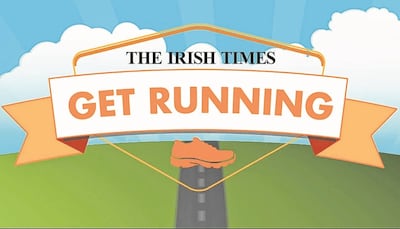There are days I feel like I’ve made much progress in my weight-loss and fitness journey, and then there are days when I notice I’m ready to jump right back into my old mindset of excuses.
I recently had one of those days. My doctor had told me that for two weeks I could not use my left arm to lift weights, or push or lift my body weight due to an injury. My injury wasn’t anything serious or related to exercise. My GP also told me I could work out in other ways including walking or running, but my brain only processed the words “do not train”.
As I listened to those words, I felt a wave of panic at being catapulted out of my routine.
Two weeks sounded like a long time and I was worried this was going to be a big setback to my progress. My mind raced from planning to do as many exercises as I could do without using my upper body, to possibly ignoring the advice, to then contemplating maybe it is best to do no exercise – to be on the safe side and all that. Would it be best if I avoided working out at all with an injury?
The temptation to use the injury as a “valid” excuse to step back and honestly, be a bit lazy, was strong. I, or no one, could judge me harshly for skipping out of exercising when I’d an injury. But I knew it was not a valid reason – I was not burnt-out or tired, and I most definitely had not been overtraining. I’d been making steady progress and was feeling good after sessions. So I was annoyed and disappointed with myself for being so keen to revert to using excuses and my “all-or-nothing” mindset that if I can’t train like normal, then I’m not doing anything at all. It was only one day and I already was feeling a bit down about it all. I could see I was mentally making it a bigger issue than it was. I’d a history of doing this.
Previously, I’d been told to take two weeks off exercise and I ended up taking off almost three months, and put on an extra stone at the time. The feelings were familiar but I was reluctant to speak about it as I felt silly for thinking this way. People with illnesses, major injury, chronic pain, disabilities, all had to put in so much extra effort to train or do normal functional movement, and here I was jumping on a small injury as an excuse to do nothing. I was not proud of myself.
Luckily, I had a pre-booked session with strength coach Cillian O'Connor two days after the GP visit. I've found it is much more difficult to drop out on an exercise when an appointment is booked. I'd explained to him the doctor's advice and restrictions beforehand, thinking the appointment might be rescheduled but it wasn't. I dragged myself to the gym, realising half-way I'd forgotten two essentials, my bottle of water and a hair bobbin (how could I keep going dehydrated with hair in my eyes), but I shrugged it off, thinking I probably wouldn't be staying long or doing much so it didn't matter too much. And wasn't I great to be making any effort at all, at this stage having upgraded my arm to mentally putting it in a cast and committing myself to a feeling of gloom for the next 12 days.
But when I arrived Cill looked enthusiastic and in full workout mode. “The injury is not ideal but we can work around it,” he announced. He told me the good news was that even though I’d one arm injured, “I’d three more limbs to train,” while following the medical advice. He explained that while I couldn’t use one arm for strength, research had shown training the non-injured limb reduced the amount of strength lost in the injured one. This would help me return to “normal” training faster.
There went my silly excuses, and my silly self-pity I was drifting towards. The session was different but I worked hard and it was a lot of fun. The work-out pulled me away from the negative thinking I was falling back into. Afterwards, my head felt clear again and distant from the person that gained more than 34kg (5st) from letting my unhealthy habits go unchallenged.
Struggled with consistency
Since losing 23kg (3.5st), my goal has been to get stronger and fitter. I’ve struggled with consistency at times but I’m finding ways to keep going. I started training with Cill to improve my strength and fix my techniques at different exercises, including squats, deadlifts and overhead presses. When training on my own, if I don’t like an exercise, I’ll avoid doing it. Cill had told me at the start that I would progress my strength significantly but warned it would take time and consistency. He has taught me the importance of warm-ups, cool-downs, flexibility exercises, stretches that improve my mobility, all I which I would skip when left to my own devices.
It has frustrated me for years that I can’t do proper full push-ups so I avoided them completely but now working on progressing my strength in that area is empowering. Reaching personal bests in different exercises has been motivating and helps building confidence.
Tackling those exercises that I’m weak at (and dislike) feels good – to be specific, it feels good later, I internally whinge at the time but improving feels good. I’m starting to believe maybe I will one day be able to do push-ups. The stronger and fitter I get, the more calories I burn and it help me improve my mindset and healthy habits. From being someone whose body ached from excess weight and being sedentary to feeling my body surge with strength is brilliant and I’m grateful.
This injury made me remember that I’m privileged to have a body that can move and that I’m capable of pushing it to do more, and I should never take that for granted.
I’m also grateful I didn’t wait until I reached my goal weight before I started to strengthen my body as getting stronger feels good no matter what size I am.
Rachel Flaherty’s column is about getting fitter and healthier
Contact Rachel on Twitter @rachelfl, Instagram or email rflaherty@irishtimes.com
Part 1: I lost 3st and I'm stronger now
Part 2: Stuck in the weight loss plateau
Part 3: Friend called my fitness holiday a fat camp
Part 4: My plan is driving me up the walls
Part 5: It is slow and fluctuates but has stayed off
Part 6: Why are we doing this? This is terrifying
Part 7: I want to form new habits
Part 8: I gained 4lb. My fear of failure returned
Part 9: It's time to face my nemesis – running
Part 10: Losing weight without trying
Part 11: Letting go of the shame and guilt helped
Part 12: Habits have led to weight loss
Part 13: I've fallen in love with running
Part 14: The mountain doesn't care who you are
Part 15: Unhappy relationship with food and my body
Part 16: I stopped trying to be perfect
Part 17: Lunchtime workout worth the hassle?
Part 18: 35,000 steps across Dublin
Part 19: Military fitness camp
Part 20: My relationship with 'clean eating'
Part 21: Holding on to my 'fat' clothes
Part 22: Missing out on opportunities
Part 23: Five 'hidden' reasons

Sign up for one of The Irish Times' Get Running programmes (it is free!).
First, pick the eight-week programme that suits you.
- Beginner Course: A course to take you from inactivity to running for 30 minutes.
- Stay On Track: For those who can squeeze in a run a few times a week.
- 10km Course: Designed for those who want to move up to the 10km mark.
Best of luck!













